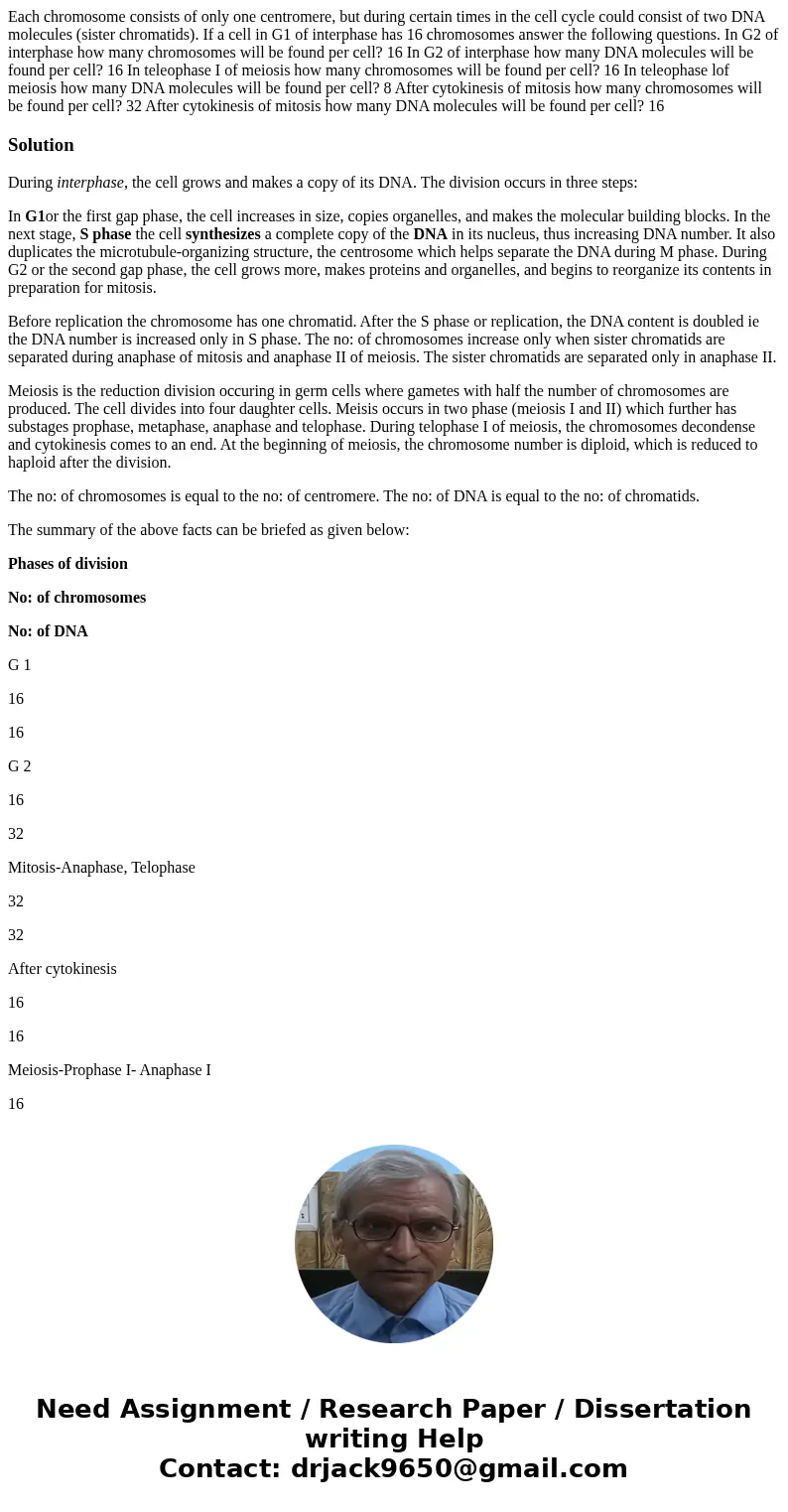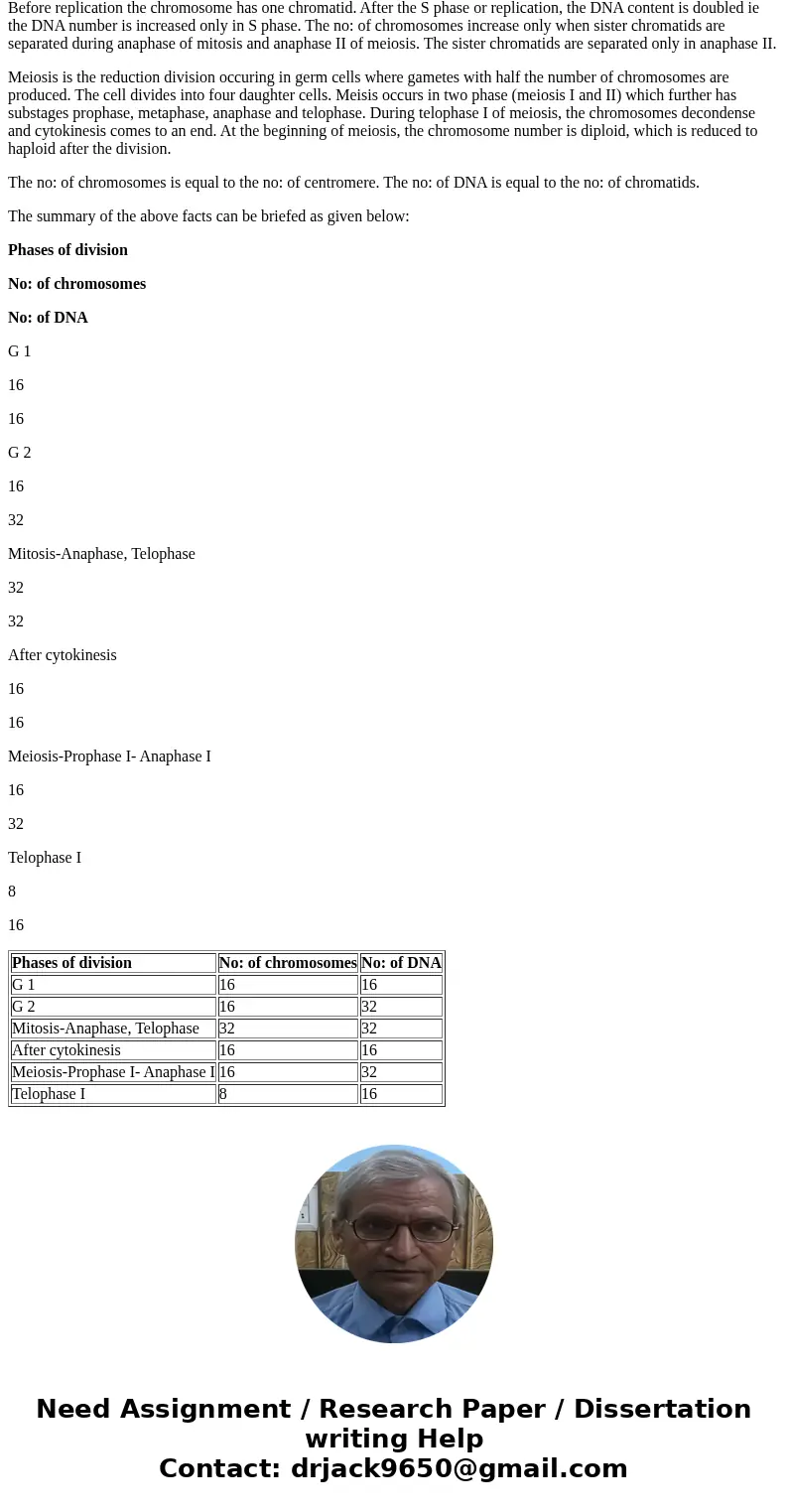Each chromosome consists of only one centromere but during c
Solution
During interphase, the cell grows and makes a copy of its DNA. The division occurs in three steps:
In G1or the first gap phase, the cell increases in size, copies organelles, and makes the molecular building blocks. In the next stage, S phase the cell synthesizes a complete copy of the DNA in its nucleus, thus increasing DNA number. It also duplicates the microtubule-organizing structure, the centrosome which helps separate the DNA during M phase. During G2 or the second gap phase, the cell grows more, makes proteins and organelles, and begins to reorganize its contents in preparation for mitosis.
Before replication the chromosome has one chromatid. After the S phase or replication, the DNA content is doubled ie the DNA number is increased only in S phase. The no: of chromosomes increase only when sister chromatids are separated during anaphase of mitosis and anaphase II of meiosis. The sister chromatids are separated only in anaphase II.
Meiosis is the reduction division occuring in germ cells where gametes with half the number of chromosomes are produced. The cell divides into four daughter cells. Meisis occurs in two phase (meiosis I and II) which further has substages prophase, metaphase, anaphase and telophase. During telophase I of meiosis, the chromosomes decondense and cytokinesis comes to an end. At the beginning of meiosis, the chromosome number is diploid, which is reduced to haploid after the division.
The no: of chromosomes is equal to the no: of centromere. The no: of DNA is equal to the no: of chromatids.
The summary of the above facts can be briefed as given below:
Phases of division
No: of chromosomes
No: of DNA
G 1
16
16
G 2
16
32
Mitosis-Anaphase, Telophase
32
32
After cytokinesis
16
16
Meiosis-Prophase I- Anaphase I
16
32
Telophase I
8
16
| Phases of division | No: of chromosomes | No: of DNA |
| G 1 | 16 | 16 |
| G 2 | 16 | 32 |
| Mitosis-Anaphase, Telophase | 32 | 32 |
| After cytokinesis | 16 | 16 |
| Meiosis-Prophase I- Anaphase I | 16 | 32 |
| Telophase I | 8 | 16 |


 Homework Sourse
Homework Sourse